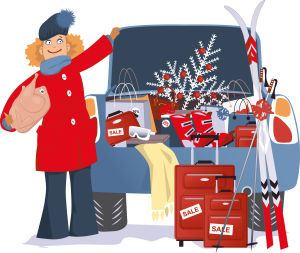 Thanksgiving is tomorrow, and soon college students and families will be traversing across the country to celebrate the holiday with one another. If you’re hitting the road soon, now is a good time to brush up on last year’s blog, “5 Thanksgiving Travel Tips” to help you get to your destination safely.
Thanksgiving is tomorrow, and soon college students and families will be traversing across the country to celebrate the holiday with one another. If you’re hitting the road soon, now is a good time to brush up on last year’s blog, “5 Thanksgiving Travel Tips” to help you get to your destination safely.
In spirit of the holiday, we thought we’d share some interesting car-related Thanksgiving travel facts as the holiday is one of the busiest days of the year for travelers. Enjoy!
Thanksgiving Travel Facts
- This year’s Thanksgiving travel volume is expected to be at its highest point in seven years, with an estimated 46.3 million Americans hitting the highway.
- In 2013, 44.4 million Americans traveled for Thanksgiving.
- Great news for gas guzzlers! Fuel prices are at their lowest mark at Thanksgiving in 5 years, as the national per gallon price is $2.85. It’s even less in Minnesota! Gas is down to $2.49 in Brooklyn Park.
- Do you remember how much gas cost last year? Looking back, the national average for gas at Thanksgiving last year was $3.28 a gallon.
- A whopping 89 percent of travelers will travel by automobile this holiday season.
- Air travel is also expected to increase. 3.55 million Americans are expected to fly to their Thanksgiving destination this year.
- While gas prices are down, airfare costs are up this Thanksgiving. Airfare prices are up one percent from last year, while your average hotel or rental car costs have gone up eight and 10 percent respectively.
- The average distance traveled this Thanksgiving will be an incredible 549 roundtrip miles. That’s up 50 miles from last year!
- Be careful! Thanksgiving is the deadliest day of the year on the roads. Leave early, take it slow and don’t drive drunk!
And remember, if you need an oil change before you take off, or if you need service on your return, stop in to Affordable Auto today.
Related source: AAA


